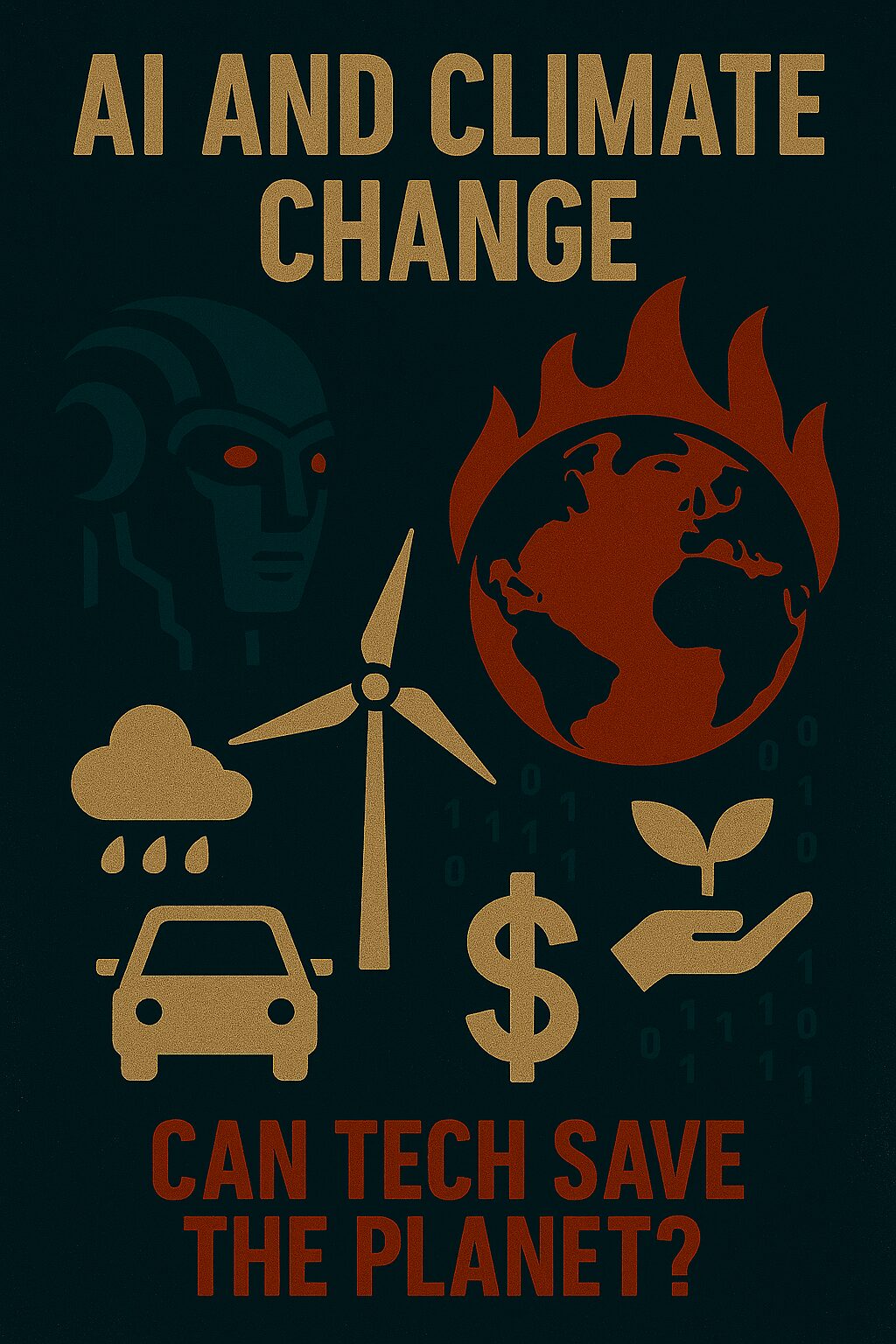Introduction: The Digital Fight for Earth’s Survival
In 2025, climate change is no longer a distant threat—it’s a daily crisis. Rising temperatures, extreme weather, and ecosystem collapse are accelerating. But so is our technology. Artificial intelligence (AI) has emerged as a powerful ally in the fight against environmental destruction. From predicting wildfires to optimizing energy use, AI is reshaping how we understand, respond to, and potentially reverse climate change.
🤖 What Is AI’s Role in Climate Action?
AI refers to machine learning systems that analyze data, identify patterns, and make decisions. In climate science, AI is used to:
- 📡 Monitor environmental changes via satellite imagery
- 🔥 Predict natural disasters like floods and wildfires
- ⚡ Optimize energy grids for efficiency and sustainability
- 🌾 Improve agricultural practices to reduce emissions
- 🧪 Model climate scenarios for better policy planning
According to , AI is already helping conservationists detect illegal deforestation, track endangered species, and forecast pollution spikes before they happen.
📈 How AI Is Tackling Climate Change in 2025
| AI Application | Environmental Impact |
|---|---|
| 🛰️ Satellite Monitoring | Detects deforestation, glacier melt, and ocean pollution in real time |
| 🔥 Disaster Prediction | Forecasts wildfires, floods, and droughts with high accuracy |
| ⚡ Smart Energy Management | Reduces waste and balances renewable energy sources |
| 🚜 Precision Agriculture | Minimizes fertilizer use and water consumption |
| 🧠 Climate Modeling | Simulates future scenarios to guide policy and investment |
A report highlights how AI tools are improving disaster response and reducing energy waste across smart cities and industrial sectors.
🧪 Real-World Examples
- 🌳 AI-powered drones help monitor rainforest health and detect illegal logging
- 🏙️ Google DeepMind’s AI reduces energy consumption in data centers by up to 40%
- 🌊 IBM’s Green Horizons project uses AI to forecast air pollution and water quality
- 🚗 Tesla’s Autopilot system contributes to lower emissions through electric mobility
These innovations show that AI isn’t just theoretical—it’s already making a measurable impact.
⚠️ The Double-Edged Sword: AI’s Environmental Cost
While AI offers solutions, it also poses risks:
- 🧮 Training large models consumes massive energy
- 🏢 Data centers contribute to carbon emissions
- 🔍 Ethical concerns around surveillance and data use in environmental monitoring
As notes, the carbon footprint of AI is real—and growing. Responsible development is key.
🛡️ How to Maximize AI’s Climate Potential
✅ Sustainable AI Practices
- Use energy-efficient hardware and cloud services
- Prioritize low-carbon data centers
- Optimize model training for minimal resource use
🌍 Policy & Collaboration
- Support open-source climate AI tools
- Fund AI research for environmental applications
- Align global efforts through climate-tech partnerships
📚 Public Awareness
- Educate communities on AI’s role in sustainability
- Promote transparency in AI-driven climate initiatives
- Encourage ethical use of environmental data
🔑 SEO Keywords to Target
- AI and climate change 2025
- artificial intelligence environmental impact
- tech solutions for global warming
- smart energy and AI
- AI in agriculture sustainability
- climate modeling with machine learning
- green technology and AI
🧭 Conclusion: Can Tech Save the Planet?
In 2025, artificial intelligence is both a challenge and a solution. Its environmental cost is undeniable—but so is its potential to transform how we fight climate change. The question isn’t whether AI can help. It’s whether we’ll use it wisely, ethically, and urgently.
Because the planet doesn’t need perfect technology. It needs committed action—and AI may be one of our strongest tools yet.

